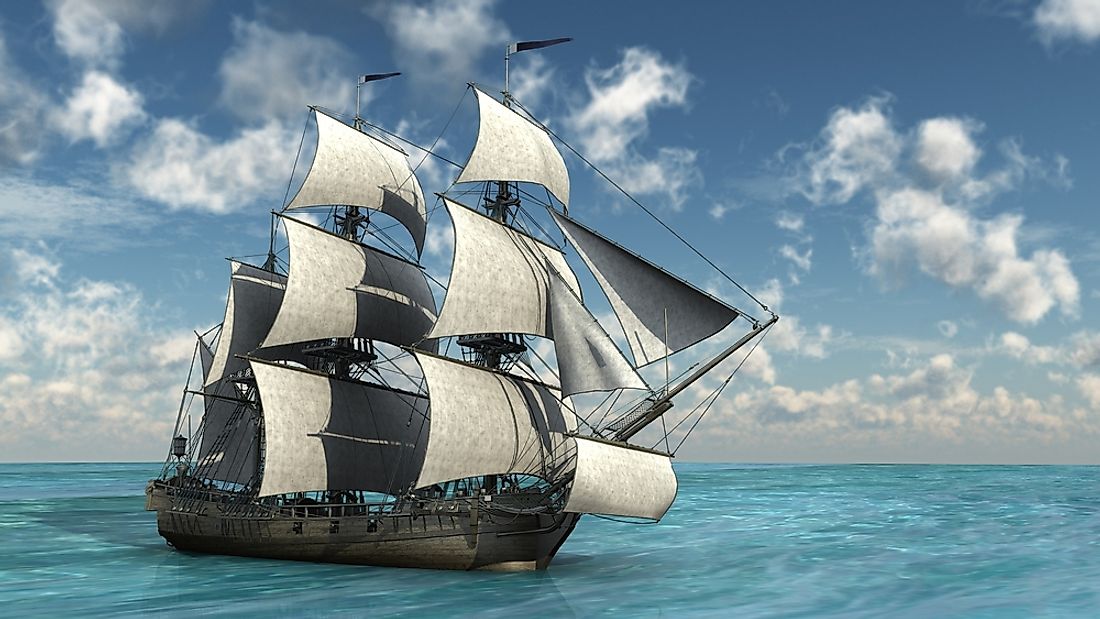What Are The Trade Winds?

Trade winds were named for their use by sailors in the establishment of trade routes through the Earth's oceans. A wind pattern found in the tropics, near the Earth's equator, they are are predominantly found in the Atlantic, Indian, and the Pacific Ocean.
What Are The Trade Winds?
The Earth is divided into two equal sections by an imaginary line called the equator. Along this line, there are winds that blow on both the northern and southern side. The pressure that emanates from this movement of air is approximately 25 to 30 degrees on both sides of the equator. The force in this region causes the air to migrate to a region of relatively minimum force along the equator bringing calmness referred to as "doldrums". Once the air meets at the doldrums, it is forced to move above the water surface, then round the Earth poles, and consequently goes down towards the base of the planet. This pattern, referred to as trade wind, is repeated with its strength influenced by the huge force in the subtropics. If the trade winds are strong, then they are able to blow and move any object on the sea surface. Most of the time, the trade winds will move from the upper half of the Earth, known as the northern hemisphere, and from the lower side called the southern hemisphere.
How Were The Trade Winds Discovered?
Between 1451 and 1506 Christopher Columbus tried to investigate the movement in the sea. During his exploration mission, he used some vessels to sail across various areas, namely the Canary Islands to the Bahamas covering 5400 miles. This voyage took approximately 36 days. Later, other explorers added weight to the research, among them a Norwegian called Thor Heyerdahl, who discovered that trade winds are capable of blowing a reeds floater from Egypt to America. During this period, also known as the Age of Sail, other explorers like Vasco Da Gama were unknowingly assisted by these winds to discover new lands and even a route to India. He sailed between July 1497 and May 1498 and was instrumental in conquering the sea.
Trade Winds and Weather Effects
An ordinary day is a combination of a sun and clouds. The clouds, typically Cumulus and Stratocumulus , are not huge due to the effects of trade winds . As a traveler moves towards the equator, he experiences higher rainfall and more dense clouds compared to the travelers traversing towards the northern hemisphere or the southern hemisphere.
Trade winds strength varies between winter and summer with winter having the strongest velocity. During such cold seasons, cumulus clouds formations are approximately 13,000 feet above the ground. Rainfall is therefore determined by the trade winds whereby if the trade winds are mild then there is likely more rainfall in large areas within the tropics. When the trade winds are strong, the rainfall levels in the evening are higher than at night.
A major advantage of the trade winds is that it slows down the process of global warming. The trade winds bring rainfall to the western hemisphere making the surface around the oceans richer in nutrients enhancing vegetation growth. The life of organisms in the sea are also influenced by the trade winds in that as it blows on the surface of the water, the water makes a circular rotation which moves nutrients from the lower sea levels to the surface nourishing the organisms.
Impacts of the Trade Winds
In the ancient times, men used ships and canoes to navigate the Earth. On long distances, the trade winds enabled the sea vessels to sail across the continents. Across major oceans like the Pacific and the Atlantic, the ship captains maneuvered the vessels and were able to discover new lands, new people, and new goods for trade.
The Europeans were able to expand their trade routes by sailing across the globe. The trade winds either made some countries easily accessible or very difficult to reach. One of the ancient treasured sea routes was greatly influenced by the trade winds. This early route was discovered by an explorer called Ferdinand Magellan in 1521 who used the trade winds to set sail in the Pacific. Vessels transversed the Pacific for more than 250 years creating trading blocs mainly dealing with spices, silver, and textiles.
According to some theories, the trade winds enabled the Spanish explorers to discover various islands, among them Hawaii. Though it is located outside the coverage of the winds, the explorers were able to reach it using the westward voyage. Other islands discovered with the assistance of the trade winds were the Marianas, Tuvalu, New Guinea, and Solomon Island.











